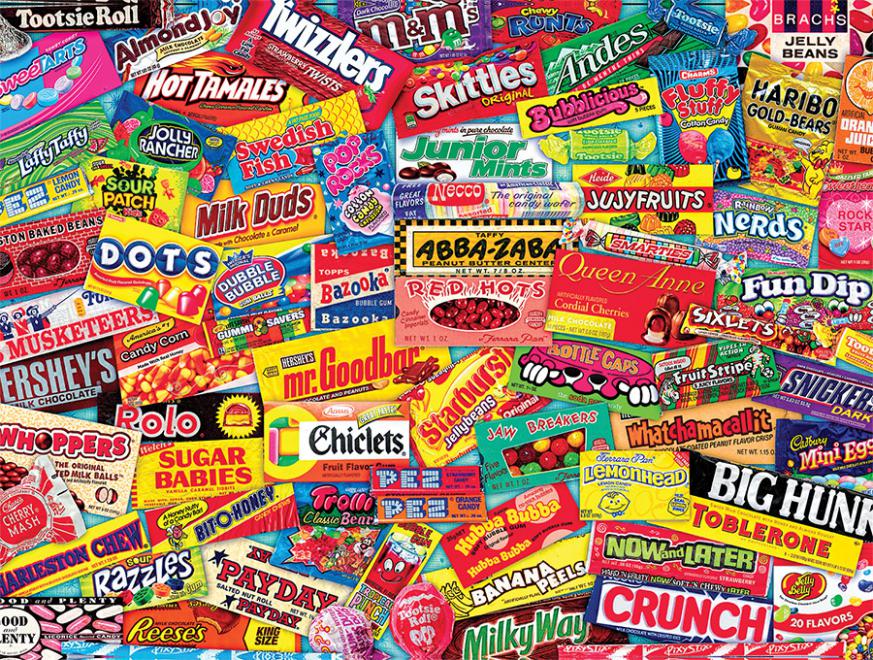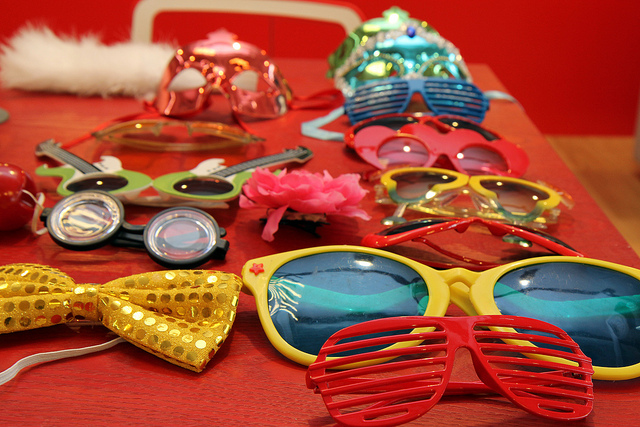The candy industry has pushed taste boundaries to shocking new levels. Taffy Town now offers “a strange and wild collection of some of the weirdest candy flavors you’ve ever heard of”. Traditional sweets still have their fans, but candy makers have taken experimental flavors to uncomfortable extremes. The BBQ Payday bar, launched during a 2017 Hershey Company campaign, stands out as the most unusual candy flavor. Consumers can now find pickle-flavored taffy at Taffy Town’s Flavor of the Month, along with lollipops that contain real worms, crickets, and scorpions.
The weird candy world stretches way beyond the reach and influence of occasional novelties. Amazon’s holiday lineup includes bacon-flavored candy canes, while international markets offer products like Salsagheti – a unique mix of gummy rope “spaghetti” with chili-tamarind packets and sugar crystal “salsa”. These unconventional candies represent more than just culinary experiments. They showcase business risks that challenge consumer comfort zones. This piece examines the oddest candy flavors created, their reason for existence, and how they managed to shock professional taste testers who regularly sample unusual products.

Pickle Candy Canes and Other Briny Nightmares
Pickle-flavored candy canes stand out as one of the weirdest and most controversial treats in the candy world. Archie McPhee, a novelty company that proudly claims ‘We Make Weird’, created these green-striped holiday treats as a bold twist on traditional peppermint. The company markets them as “a perfect alternative to mint” for people who like savory more than sweet. Each festive box comes decorated with a “friendly image of Santa Pickle”.
Why pickle candy is so polarizing
The basic appeal of pickle-flavored treats comes down to an interesting social pattern. Pickles create a clear divide among people – they either love them or hate them with no middle ground. People who love pickles become part of an unofficial club that shares the same taste. “I think there’s a sense of identity attached to liking pickles because it’s such an odd flavor,” says Alexis Ratliff, a brand marketing specialist at pickle company Van Holten’s.
This sense of belonging helps explain why unusual candy cane flavors like pickle keep finding eager fans. The pickle trend shows how consumers want to try more adventurous tastes. Ratliff points out, “Extreme flavors of all kinds are booming right now. Consumers are not only tolerating bolder flavors, like spice and sour, but they expect it”.
Pickle candy connects to old traditions, especially the German custom of hanging a “Christmas Pickle” on holiday trees – a practice that’s become really popular in the United States. This cultural connection makes pickle candy canes seem a bit less strange than you might think.
Taste tester reactions to briny sweets
Food experts had some vivid, often horrified reactions when they tried pickle-flavored treats:
- One reviewer said it was “heavy on the dill” with “surprising complexity” that turned into “more of a bread-and-butter overtone” after a minute.
- Another found that while it had “the aroma with a sharpness reminiscent of actual vinegar,” the “only thing missing from a classic dill pickle effect is the salt”.
- In spite of that, most reviewers simply said they were “not good”.
A food writer didn’t hold back: the pickle candy cane “doesn’t really taste like pickle. It tastes vaguely of cucumber—but in a vegetal way. The sharp, briney flavors of pickle aren’t there. It’s more boring than weird”. The same writer admitted these treats aren’t meant to taste good, calling them “the Whoopie Cushions of food” made to provoke reactions.
Other weird candy cane flavors in the same category
Archie McPhee didn’t stop at pickle. They’ve created many savory, bizarre candy cane varieties that challenge what candy should taste like. Their sardine-flavored candy canes might be the strangest, with gray stripes and packaging showing a fish wearing “a top hat and a cheeky bow tie”. One horrified taster said they taste like “defective fish oil supplement with notes of metal like it came out of a can”.
Ketchup candy canes look misleadingly normal with red and white stripes. Tasters described them as “the worst ketchup you’ve ever had” or “hard Campbell’s tomato soup, with the acidic tone of the tomato clashing horrifically with the clammy sweetness”.
The company’s creative streak didn’t end there. They made Caesar salad flavor (one taster noted “a crisp greenness, a hint of garlic, even a Worcestershire afterbite”), mac and cheese, hot dog, gravy, bacon, and even brisket candy canes. Each flavor serves as a conversation starter or dare at holiday parties rather than a serious attempt at making tasty candy.

Wasabi and BBQ: When Candy Gets Too Savory
The candy industry keeps expanding its flavor horizons past regular sweetness into savory territory. Some of the boldest examples you’ll find are wasabi-filled chocolate wafers and BBQ-flavored caramel bars that challenge what we think candy should taste like.
Wasabi KitKats and their spicy surprise
Japan leads the world in unique KitKat varieties, and wasabi stands out as one of their most talked-about flavors. This green treat comes from Shizuoka prefecture, which makes about 80% of Japan’s wasabi each year. Nestlé teamed up with Tamaruya Honten, a 140-year-old wasabi shop known for its top-quality products, to create this special flavor.
The taste isn’t as scary as you might think. A Japanese blogger said it’s “not very spicy” and kids can eat it too. Someone else mentioned that “you smell the faint scent of wasabi at the time you open the package. That scent passes gently through your nose as you eat it”.
The candy gives you that familiar wasabi kick right away but stays sweet thanks to its white chocolate base. One person who tried it said, “The wasabi powder makes your tongue tingle, but won’t irritate or sting your nose”. This means even people who usually stay away from wasabi might enjoy this unique twist.
These spicy treats seem to catch tourists’ attention more than locals’. Japanese consumers don’t usually rank wasabi among their top KitKat picks. Yet it ranks third among KitKat flavors that tourists buy as souvenirs.
BBQ Payday bars and the backlash
Hershey’s launched its “Flavors of America” candy collection in 2017, featuring maybe one of the strangest candy ideas that ever spread: the Texas BBQ PayDay bar. This special edition tried to mix the classic peanut-caramel PayDay recipe with BBQ flavoring.
People who tried it caught a sweet BBQ sauce smell right after unwrapping it. The taste turned out to be pretty complex, with hints of tang, spice, smoke, and even onion and garlic. One taster said it reminded them of “a sweet BBQ sauce with molasses or maple syrup mixed in for sweetness”.
People couldn’t agree on whether they liked it. Some gave it a decent 6 out of 10, while others weren’t sure what to think and ended up saying: “I don’t hate it. I don’t love it”. Many people wondered if this was really candy, with one saying: “Calling this ‘candy’ is nowhere near accurate”.
One review made an interesting comparison to Chinese dim sum pork buns: “the sweetness of the white dough, the sweetness of the reddish sauce and the smokiness of the pork that is ‘muted’ by the sweet dough…that’s the exact balance PayDay struck here. WEIRD”.
Why savory candy often fails
Savory candy faces a basic problem: people expect sweetness from candy. This makes savory flavors feel out of place, whatever the quality. These hybrid products leave people confused – they don’t work well as candy or as savory snacks.
These products don’t solve any real customer needs. While successful food breakthroughs usually fix a problem, weird candy flavors exist just to be different rather than meeting actual wants. A BBQ PayDay reviewer put it well: “I’m not really sure what itch this scratches”.
The texture has to feel right too. Some reviewers thought the BBQ PayDay felt more like “a post-workout bar” than a treat. This gap between what people expect and what they get makes it harder for them to accept these candies.
Weird candy needs to taste good to last in the market. Curiosity might make people buy it once, but they’ll only come back if they truly enjoy it rather than just wanting to try something new.
Durian, Musk, and Other Smelly Sweets
The smell of candy plays a bigger role than taste in some of the world’s weirdest confections. Some treats are known for their aroma that challenges traditional candy expectations.
Durian candy and its infamous scent
Durian, known as the “king of fruits” in Southeast Asia, has earned global attention for its powerful smell. Singapore’s public transport systems ban this fruit because of its strong odor. The candy version gives you a milder taste of this controversial flavor, though you can’t miss its distinctive scent.
People describe durian’s smell in colorful and repulsive ways:
- “Like eating custard over an open sewer”
- “Carrion in custard”
- “Pig-sh*t, turpentine and onions, garnished with a gym sock”
- “Like the flesh of some animal in a state of putrefaction”
Durian candy has carved out its market niche, mostly among Southeast Asian consumers. These treats give you a creamy, custard-like sweetness beneath their unique scent. Newcomers often start with durian-flavored desserts, cookies and ice cream as their introduction to this unusual flavor.
Musk sticks: perfume or treat?
Australia brings its own aromatic candy challenge with musk sticks. These fairy-pink cylinders blend gelatin and icing sugar with a perfume-like flavor from “musk essence”. The original flavoring came from musk deer’s glandular secretions, but modern versions use synthetic compounds.
Australians love these treats – Woolworths sells about 24 million musk sticks each year. Tourists often find them off-putting though. People compare their taste to “a nice-smelling shop,” “grandmother’s make-up” and “the smell of old ladies at the bus stop”.
Musk wasn’t always controversial in candy making. Ottoman Empire courtly parties featured musk lozenges in the 1600s. People valued them for their flavor and their ability to freshen breath.
How smell affects taste perception
Our sense of smell accounts for 80-90% of what we think of as “taste”. Our tongues can only detect five basic tastes (sweet, sour, salty, bitter, and umami). The nose’s olfactory organs have about 400 different receptors that can identify hundreds of thousands of scents.
Studies show certain odors can improve or suppress specific taste perceptions. Scientists found some smells make solutions taste sweeter, while others reduce sweetness. The sweetness of an odor turned out to be the best way to predict taste ratings.
This connection between smell and taste explains why unusual candy with strong aromas creates such mixed reactions – the scent changes the whole taste experience.
Insect Candy and the Fear Factor
The weird candy world goes beyond unusual flavors and odors into truly unsettling territory with products that contain actual insects. These treats challenge not just our taste limits but also push us to question what we think of as food.
Lollipops with scorpions and worms
Scorpion suckers stand out as some of the most extreme candies in this unusual market. Hotlix Candy makes these see-through treats in apple, blueberry, strawberry, and banana flavors. These aren’t just for show – they contain real scorpions with their stingers removed and bodies baked to make them safe.
The same company produces mealworm lollipops that have real beetle larvae inside the candy. A retailer explains, “Although the creator of these lollipops was inspired by the Worm in a bottle of Mezcal, that Worm is actually the Larva of a moth”. Customers often can’t believe these are real insects and ask if eating them could kill them.
Why some testers refused to try them
Bugs make many people feel deeply uncomfortable just by looking at them. Western societies tend to see insects as “unclean and a health risk associated with food contamination and filthiness”. One candy reviewer tried the scorpion and said it tasted “slightly acrid, like eating a nut on the cusp of going bad.” They ended up calling it “one of the foulest food experiences”.
People often reject foods based on what they expect rather than actual taste. A study in Belgium showed that more than 65% of meat eaters flat out rejected the idea of replacing meat with insects. This mindset explains why even professional food testers sometimes refuse to try these candies.
Cultural acceptance of edible insects
About 2 billion people around the world keep insects as part of their regular diet, which contrasts sharply with Western disgust. Studies across cultures show interesting differences – Greek participants were much less open to eating insect-based foods compared to Irish participants.
The way insects look plays a big role. Both Greek and Irish study participants were more willing to try insect foods when they couldn’t see the bugs. These candy makers know about this reluctance and make use of the disgust factor as entertainment value rather than taste – making them the “Whoopie Cushions of food”.
Curry, Cheese, and Tomato: The Oddest Flavor Combos
Cultural boundaries fade most noticeably as candy makers test savory flavors once reserved for main courses. These strange confections leave tasters puzzled yet intrigued by their bold combinations.
Coconut curry taffy and its unexpected heat
Taffy Town’s Coconut Curry Salt Water Taffy breaks away from typical sweet treats. This chewy creation blends tropical coconut with curry spice and gives taste buds an unexpected adventure. The innocent-looking candy packs a surprising kick—its recipe includes chili powder and cayenne pepper among other traditional taffy ingredients like corn syrup and egg whites. People call it “a classic flavor combination of Asian cuisines” that “melts in your mouth”.
Cheese & onion chocolate bars
Tayto, Ireland’s iconic potato chip brand, amazed consumers by mixing their famous cheese and onion crisps with Belgian milk chocolate. The experimental bar came from customer demands through a social-first campaign. The company made just 100,000 bars at the time in 2013, but production grew to 480,000 units by 2022. Some bars sold for triple their price on eBay. Tasters report a surprisingly “mild” experience where chocolate takes over until the “stale crisp” aftertaste appears.
Salty tomato candy and the confusion it caused
Daiso’s Salt Tomato Candy from Japan puzzles people at first glance. This unique treat captures fresh tomatoes’ essence with a subtle salt touch. Each wrapped piece contains real tomato powder and concentrate. One reviewer said it tastes “exactly like a fresh tomato, sweet and delicious right off the vine”.
How these flavors challenge candy norms
These unusual combinations shake up our beliefs about candy’s nature. The treats use savory cuisine flavors—curry spices, cheese, onion, and tomato—that make people think over the lines between meal categories. These cultural oddities now spark gut reactions from joy to disgust.
Summing all up
Weird candy flavors challenge everything we know about sweet treats. Pickle-flavored candy canes and scorpion lollipops go beyond what even professional taste testers don’t deal very well with. The sort of thing I love about these candies isn’t just their shock value – they tell us something deeper about consumer psychology and cultural differences.
Companies like Archie McPhee and Taffy Town think over these bold flavors to start conversations rather than create real culinary breakthroughs. Most weird candies end up as novelty items or dare-worthy challenges, though some find their niche markets. To cite an instance, the BBQ PayDay bar left people scratching their heads about its purpose, while wasabi KitKats became a hit with tourists more than locals.
Our acceptance of unusual flavors depends substantially on cultural context. Therefore, durian candy might disgust Western taste buds but brings joy to Southeast Asian consumers. Australian musk sticks’ success tells a similar story – they sell millions yearly even though tourists compare them to “grandmother’s makeup.” These stark contrasts show how deeply our taste priorities link to cultural exposure and learned experiences.
Smell and taste work together to explain why these candies create such strong reactions. Since 80-90% of taste perception comes from smell, candies with powerful aromas like durian completely change how we experience them.
These weird candies reveal something interesting about our psychological food boundaries. Lollipops with real insects show how Western consumers usually reject certain ingredients as “non-food” despite their nutritional value and acceptance in other cultures. This rejection comes from what we expect rather than actual taste.
Strange flavors will keep coming from the candy industry as it balances between state-of-the-art ideas and pure novelty. Whatever their culinary merit, these weird candies do more than just taste interesting – they challenge what we think we know, get people talking, and sometimes make professional taste testers question their career choices.
Here are some FAQs about weird candy flavors:
What are some weird candies?
Some of the weirdest candy flavors include bacon gumballs, pickle-flavored cotton candy, and insect-filled lollipops. Among weird Halloween candy options, you’ll find flavors like sour earthworm and bloody bandage gummies that push creative boundaries. These unusual treats go far beyond typical weird candy cane flavors into truly bizarre territory.
What is the weirdest flavor of candy cane?
The weirdest candy cane flavors include hot dog, wasabi, and even gravy-flavored varieties that defy holiday traditions. Some companies experiment with weird candy flavors like pickle or buffalo wing for their seasonal peppermint sticks. These unconventional weird candy cane flavors often appear as novelty items or gag gifts rather than serious confections.
What is a unique candy?
One unique candy is Japanese “Dagashi” – cheap, nostalgic snacks featuring weird candy names like “Baby Star Ramen.” Other standouts include Scandinavian salt licorice or Mexican chili-mango lollipops that offer unusual flavor combinations. These go beyond typical weird Halloween candy to represent cultural candy traditions.
What are the top 10 candies?
While mainstream top 10 lists feature classics like Snickers and Reese’s, more unusual options include Japanese Kit Kat flavors or weird candy names like “Zotz” fizzy centers. Some weird Halloween candy like candy corn also makes regional favorites lists despite being polarizing. These rankings rarely include the most extreme weird candy flavors found in specialty shops.
What is the most unpopular candy?
Candy corn consistently ranks as the most unpopular candy, especially outside Halloween season. Other weird candy flavors like black licorice or circus peanuts also appear on least-favorite lists year after year. Even among weird candy cane flavors, the most unusual varieties tend to be more divisive than truly disliked.
Is there a nerd candy?
Yes, Nerds are an actual candy – small, crunchy, sugary bits sold in small boxes with weird candy names like “Wild Cherry” and “Grape.” These tart candies differ from more adventurous weird candy flavors but maintain a cult following. Their name plays on both their size and the “nerdy” image they cultivated in 1980s advertising.
Why does candy taste weird?
Candy can taste weird due to unusual flavor combinations, artificial sweeteners, or experimental recipes pushing boundaries. Some weird candy flavors intentionally challenge palates, while others result from cost-cutting ingredient substitutions. Even traditional weird candy cane flavors can seem strange when compared to classic peppermint.
What is the hardest candy to make?
The hardest candy to make is likely hand-pulled candy like traditional taffy or certain artisanal lollipops with weird candy names. These require precise temperature control and timing that eludes amateur confectioners. Even professional makers struggle with some weird candy flavors that involve unusual ingredients or complex layering techniques.
What does possum flavored candy taste like?
While no mainstream possum-flavored candy exists, the concept aligns with extreme weird Halloween candy novelties. Imagining the taste, it would likely resemble gamey, meaty flavors similar to other weird candy flavors like bacon or jerky varieties. Such bizarre concepts exist more as conversation pieces than actual consumable products.









